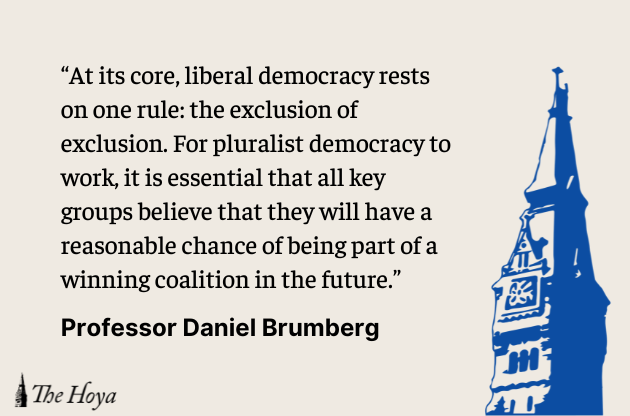Polarization is everywhere in our lives: It has poisoned American politics by turning democracy into an existential war in which each side sees the other as a threat to its most cherished values. For example, campus slogans and poster battles triggered by international conflicts — such as the latest outbreak in violence between Israel and Hamas — remind us of the fundamental “othering” that has unfolded on both sides of the aisle.
In the United States, polarization thrives because both the Democratic and Republican Parties — and their constituencies — fear that if rivals secure victories in the electoral arena, their foes will impose national and state laws that pose a threat to a way of life. And this war creates a kind of struggle animated by a demonization of one’s rivals and thus a belief that the inclusion of parties not in the governing majority must be tossed aside in the quest for total victory.
My own interest in polarization is both personal and scholarly. I come from a family of Jewish refugees, some of whom nearly died in the Holocaust. My father and his parents, despite experiencing antisemitism and racism, made a life in the United States and became American citizens. Due to spending his life studying totalitarian regimes, my father became familiar with the topic of populist autocrats exploiting the disillusionment of democracy and economic inequality. And I am sure that he would have been profoundly saddened to witness what has happened in the United States over the past decade.
But as I have personally witnessed the toxic mix of populism and polarization in the United States, I decided to devote my professional and scholarly career to better understanding these dynamics through a reasonable and objective lens.
The severity of polarization in the United States coupled with the very real prospect of an authoritarian wave undermining pluralist democracy convinced me that I would have to grapple with the threat of autocratization in the United States. For example, I want to make it clear to students that Donald Trump’s election and the rise of populist nationalist ideology in the Republican Party must be confronted in order to undo their polarizing influence. This is crucial as stakeholders attempt to find ways to restore what is vital to the United States: an effective two-party system that emphasizes inclusion rather than exclusion.
It is the fear of being excluded from the political process that drives toxic polarization, makes every election feel existentially important and fosters distrust of people on the other side. At its core, liberal democracy rests on one rule: the exclusion of exclusion. For pluralist democracy to work, it is essential that all key groups believe that they will have a reasonable chance of being part of a winning coalition in the future. There is no incentive to play the game if you have no chance of winning: Democracy is, in fact, a zero-sum game. It is only sustainable over time if today’s losers can become tomorrow’s winners.
In theory, “structural” solutions such as electoral reforms could play a dramatic role in alleviating polarization in the United States. However, paradoxically, under the present conditions of political warfare, such reforms are hard, if not impossible. The only way forward is to find space and time to exit the perfect storm of polarization through grassroots strategies and initiatives that unfold outside the limelight of conflict.
I have brought many of these themes into a course on polarization that I will be teaching in Spring 2024 that strangely enough, seems to be the only one of its kind at Georgetown. The class looks at the full array of drivers that foster polarization and the emergence of populist ideologies and leaders. While we discuss the U.S. political context, the analytical framework that infuses the course also offers a basis for a wider comparative discussion of polarization in many countries, including Poland, Israel, Palestine, Hungary, Brazil, Turkey, Tunisia and Egypt. The course also includes several classes during which students are introduced to grassroots approaches for mitigating polarization, including Georgetown’s “In Your Shoes” project that uses theater and performance to help students reach across the ideological divide.
One of the great challenges in teaching courses on polarization is ensuring that the class itself
provides an arena for diverse perspectives. We cannot move forward in addressing fears of exclusion without encouraging inclusion in the classroom. My job as a professor is to set aside my personal feelings and give students the analytical tools that will help them step outside of their own echo chambers. To simultaneously become analysts of the maladies we are facing in this country and hold on to our values and ideals even when they clash is no easy feat. Still, I encourage all students interested in these conversations to reach out and learn more about how all of us can bring our contending voices to discussions as we struggle to find a path forward.
Daniel Brumberg is the Director of Democracy and Governance Studies at Georgetown University.














